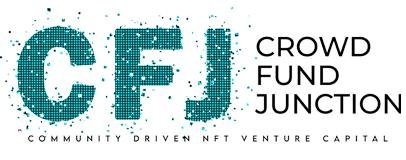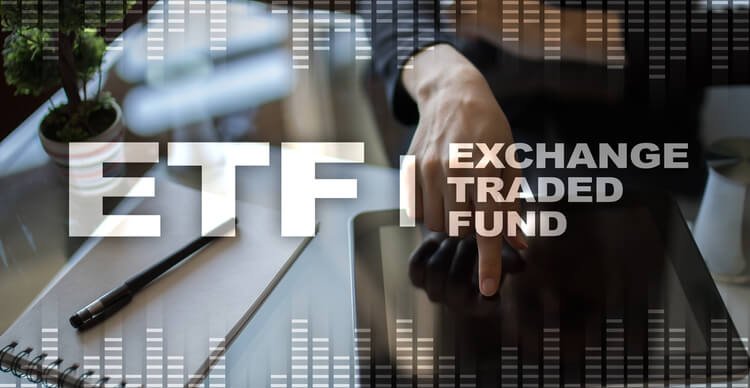Crypto Volatility Returns: Bitcoin’s Price Clings to Support Amid Bearish
The First Movers Advantage with NFTs
(Originally posted on : NFTICALLY )
It was March 2021 when Beeple’s collage of 5000 digital images sold for a mind-boggling $69 million. Undoubtedly, that opened the floodgates for Non-Fungible Tokens (NFTs) to go mainstream. Today, artists, brands, celebrities, and even governments across the world have started venturing into the metaverse. Likewise. NFTICALLY is ahead of the curve with its white-label NFT marketplace solutions.
Let us know the importance of the first mover’s advantage in the ultra-competitive Web 3.0 era
Use-cases – Initially, it was the artwork that triggered the NFT craze. However, things have changed drastically. Today, NFTs are the rage in industries like gaming, fashion, entertainment, music, sports, real estate, etc. There is a high demand from investors for buying rare collectibles. Importantly, NFTICALLY facilitates content creators, enterprises, gamers, and influencers to launch their NFT store in a hassle-free manner.
There are plenty of use-cases. NFTs can represent audios, domain names, GIFs, videos, photos, memes, tweets, paintings, passes, posters, tickets, songs, land, etc. Terms like Profile Picture (PFP) and Play-to-Earn (P2E) have also become commonplace now.
Greater market share – Overall, around 2.2 million NFTs have been sold for a whopping $17.66 billion as per CoinMarketCap. This indicates that the market conditions for crypto-collectibles are bullish. In the same vein, using our white-label solutions will help you get the first-mover advantage in the metaverse.
The NFT marketplace is packed with features like gas-free minting, multi-chain support, integration with the leading software wallets, a 3D metaverse gallery, a store manager, a custom URL, and 24×7 technical assistance. We offer a range of subscription plans (Free, Standard, Professional, and Enterprise) on a monthly and yearly basis.
No need to possess technical expertise – Terms like smart contracts, minting, and gas fees might sound complicated to some. However, our white-label solutions assist you in launching an NFT store in a quick time. For instance, you need not have any technical knowledge for building an NFT marketplace. A friendly user interface along with drag and drop tools helps in accessing essential features with just a few clicks. Hence, the process of minting, bidding, buying, and selling collectibles becomes quite simple.
How are NFTs changing the future of Web 3.0?
As the debate between centralization and decentralization grows, NFTs give more power to creators. They have control over their data and possess freedom in setting a price for their unique content. Artists need not deal with any middlemen while selling their NFT to the target audience. Currently, the trends in the metaverse are cross-chain trading, fractional NFTs, and digital avatars. As adoption grows, creators need to take specific measures to protect their valuable collectibles.
While acclaimed NFT marketplaces operate on specific standards, options like smart minting will be a game-changer. It ensures greater decentralization as users can finalize the terms and conditions and determine the metadata properties. This is extremely useful when artists announce a new project or collaborate with popular creators. State-of-the-art security protocols will help in eliminating counterfeit NFTs.
Hence, artists can safeguard themselves from issues like copyright infringement, intellectual property theft, and trademark violations. They can whitelist users and wallet addresses to prevent unauthorized access.
Moreover, the issue of native tokens by certain NFT marketplaces will help in directly attracting communities. They can use these digital assets for processing transactions and for casting votes for specific proposals. In the long run, content creators will become an integral part of the Decentralized Autonomous Organization (DAO). They can determine the parameters of the marketplace.
Generally, a specific percentage of tokens are distributed to creators and NFT collectors via airdrop programs. They will have to claim the digital assets within a certain duration. What happens in the case of unclaimed tokens? They are returned to the treasury.
Final Thoughts
Unquestionably, NFTs have brought the physical and the virtual worlds closer. In the coming years, almost every real-world object can be converted into crypto collectibles. Content creators can use microchips, embed them into an object, and prove their ownership on the blockchain network. Artists will also receive their royalties on-chain for every secondary sale of their NFT.
Renowned brands can also use NFTs as part of their loyalty programs. Hence, those who hold crypto collectibles can unlock rare content and have a unique experience. Are you a content creator aiming to get traction in the Web 3.0 era? Reach out to NFTICALLY now for NFT marketplace development, build a strong community, and break records in the metaverse.








 Bitcoin
Bitcoin  Ethereum
Ethereum  Tether
Tether  XRP
XRP  USDC
USDC  Lido Staked Ether
Lido Staked Ether  TRON
TRON  Dogecoin
Dogecoin  Cardano
Cardano  Figure Heloc
Figure Heloc  WhiteBIT Coin
WhiteBIT Coin  Wrapped stETH
Wrapped stETH  Bitcoin Cash
Bitcoin Cash  Wrapped Bitcoin
Wrapped Bitcoin  USDS
USDS  Chainlink
Chainlink  Wrapped eETH
Wrapped eETH  Binance Bridged USDT (BNB Smart Chain)
Binance Bridged USDT (BNB Smart Chain)  LEO Token
LEO Token  WETH
WETH  Hyperliquid
Hyperliquid  Stellar
Stellar  Monero
Monero  Zcash
Zcash  Ethena USDe
Ethena USDe  Coinbase Wrapped BTC
Coinbase Wrapped BTC  Litecoin
Litecoin  Sui
Sui  Avalanche
Avalanche  Hedera
Hedera  Shiba Inu
Shiba Inu  sUSDS
sUSDS  USDT0
USDT0  Dai
Dai  Mantle
Mantle  Toncoin
Toncoin  PayPal USD
PayPal USD  World Liberty Financial
World Liberty Financial  Cronos
Cronos  Ethena Staked USDe
Ethena Staked USDe  Uniswap
Uniswap  Polkadot
Polkadot  MemeCore
MemeCore  Aave
Aave  Bittensor
Bittensor  USD1
USD1  Canton
Canton  Rain
Rain  Bitget Token
Bitget Token  OKB
OKB  Tether Gold
Tether Gold  Falcon USD
Falcon USD  Aster
Aster  NEAR Protocol
NEAR Protocol  Ethereum Classic
Ethereum Classic  Binance-Peg WETH
Binance-Peg WETH  Ethena
Ethena  Jito Staked SOL
Jito Staked SOL  BlackRock USD Institutional Digital Liquidity Fund
BlackRock USD Institutional Digital Liquidity Fund  Pepe
Pepe  Internet Computer
Internet Computer  Pi Network
Pi Network  Jupiter Perpetuals Liquidity Provider Token
Jupiter Perpetuals Liquidity Provider Token  Solana
Solana  Pump.fun
Pump.fun  syrupUSDC
syrupUSDC  HTX DAO
HTX DAO  PAX Gold
PAX Gold  Ondo
Ondo  Worldcoin
Worldcoin  Global Dollar
Global Dollar  KuCoin
KuCoin  Circle USYC
Circle USYC  syrupUSDT
syrupUSDT  Sky
Sky  BFUSD
BFUSD  Ripple USD
Ripple USD  Rocket Pool ETH
Rocket Pool ETH  Binance Bridged USDC (BNB Smart Chain)
Binance Bridged USDC (BNB Smart Chain)  POL (ex-MATIC)
POL (ex-MATIC)  Aptos
Aptos  Gate
Gate  Wrapped BNB
Wrapped BNB  Arbitrum
Arbitrum  Binance Staked SOL
Binance Staked SOL  Official Trump
Official Trump  Algorand
Algorand  Midnight
Midnight  Function FBTC
Function FBTC  Cosmos Hub
Cosmos Hub  Liquid Staked ETH
Liquid Staked ETH  Lombard Staked BTC
Lombard Staked BTC  VeChain
VeChain  Solv Protocol BTC
Solv Protocol BTC